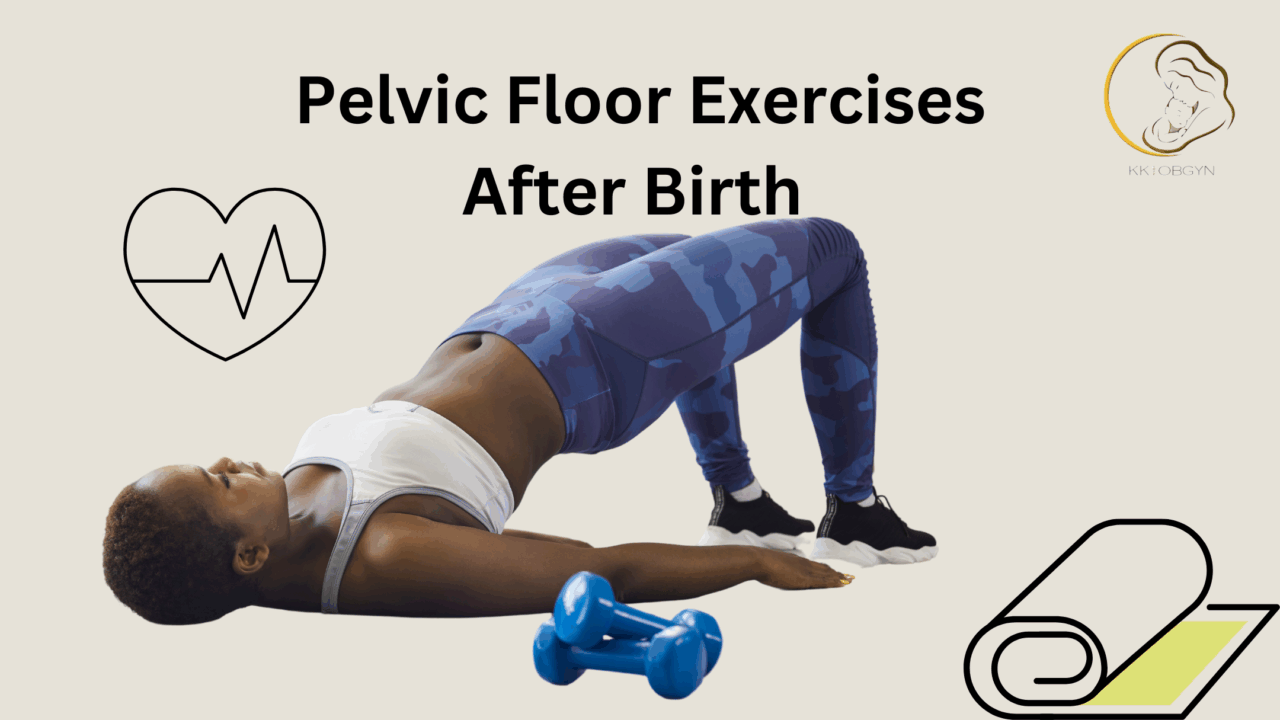Giving birth, whether vaginally or via C-section, can significantly impact your pelvic floor muscles. These muscles support your bladder, uterus, and rectum—and during pregnancy and childbirth, they’re stretched and strained, leading to weakness or dysfunction.
Pelvic floor exercises, especially Kegels, are a key part of postpartum recovery. They help prevent urinary incontinence, promote healing, and restore core strength. This blog will guide you through the importance of pelvic floor exercises, how to perform them, and when to begin after birth.
What Is the Pelvic Floor?
The pelvic floor is a group of muscles and ligaments that form a sling across the bottom of the pelvis. It:
- Supports pelvic organs
- Helps control bladder and bowel movements
- Plays a role in sexual function
After birth, these muscles may be:
- Stretched
- Torn (especially after vaginal delivery)
- Affected by episiotomies or perineal tears
- Weak due to hormonal changes or prolonged labor
Common Postpartum Pelvic Floor Issues
|
Symptom |
Possible Cause |
|
Urinary leakage |
Weak pelvic muscles |
|
Pain during intercourse |
Muscle tightness or trauma |
|
Pressure or heaviness in pelvis |
Pelvic organ prolapse |
|
Difficulty holding gas or stool |
Loss of muscle control |
Benefits of Pelvic Floor Exercises
- Improve bladder control
- Support healing of tissues
- Prevent or manage pelvic organ prolapse
- Enhance sexual pleasure
- Improve core stability and posture
When to Start Pelvic Floor Exercises
You can begin gentle pelvic floor exercises within a few days after delivery, even with stitches or a C-section—but always consult your healthcare provider first.
For some women, pelvic floor physical therapy may be recommended, especially if symptoms are severe or persistent.
How to Do Kegel Exercises (Step-by-Step)
- Identify the Muscles:
- Pretend you are stopping the flow of urine. The muscles you engage are your pelvic floor muscles.
- Find a Comfortable Position:
- Start lying down with knees bent. You can progress to sitting or standing as you improve.
- Engage and Lift:
- Squeeze and lift the pelvic muscles.
- Hold for 5 seconds, then release for 5 seconds.
- Repeat:
- Aim for 10 repetitions per set.
- Do 3 sets per day.
Note: Avoid holding your breath or tightening your abdomen, buttocks, or thighs during the exercise.
Progressive Pelvic Floor Routine
|
Week Postpartum |
Type of Exercise |
Frequency |
|
Week 1–2 |
Gentle Kegels (5-sec hold) |
3x per day |
|
Week 3–4 |
Kegels + Quick Flicks (1-sec hold/release) |
3x per day |
|
Week 5–6 |
Kegels while standing/sitting |
3x per day |
|
Week 6+ |
Add functional movements (during lifting, squats) |
Ongoing |
Tips for Success
- Set a daily reminder
- Connect with your breath—exhale on the lift
- Use visual aids or apps like Elvie Trainer or Kegel Trainer
- Avoid doing Kegels while urinating, as this can cause incomplete bladder emptying
When to Seek Professional Help
If you’re not sure you’re doing the exercises correctly or symptoms persist, ask your provider for a referral to a pelvic floor physical therapist.
Red flags that warrant professional attention:
- Pain during exercises
- Incontinence not improving after 6–8 weeks
- A bulge or pressure sensation in the vagina
- Difficulty engaging the muscles
Complementary Core Strengthening Moves
Strengthening your entire core will support your pelvic floor. Add these after your 6-week check-up:
- Deep belly breathing
- Bridge pose
- Modified planks
- Cat-cow stretches
Always start slow and consult a provider before beginning any postpartum fitness program.
Final Thoughts
Your pelvic floor went through a lot during pregnancy and childbirth. Taking the time to heal and rebuild this essential group of muscles can make a lasting difference in your postpartum health.
Start gently, be consistent, and listen to your body. With time and care, you’ll regain strength, control, and confidence.


